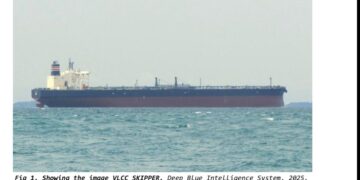Costly environmental regulations recently introduced by the UN maritime body International Maritime Organization (IMO) are among the main factors for increased ship demolitions this year.
The Sulphur Cap 2020 regulation, the Ballast Water Management Convention and other regulations have contributed to a steep rise in the scrapping of vessels during the first half of 2021, according to VesselsValue.
Other significant factors are extreme scrap prices and an ever-aging global fleet.
This, together with international environmental regulations, is described as a “perfect blend” to see scrapping numbers spike.
275 cargo vessels sold for scrap in H1 2021
A total of 275 cargo ships were sold for demolition in the first half of this year, up 40% and 33% compared to 2020 and 2019, respectively, VesselsValue’s “Half year review: Demolition” shows.
The 275 scrapped vessels have a combined dwt of 11.9 million and a total scrap value of over $1 billion.
Out of these, 131 tankers were scrapped, accounting for nearly half of all cargo vessels scrapped in H1 2021. The number of tankers scrapped in H1 2021 is up four-fold compared to 2020 and 2019. For reference, the total number of tankers scrapped throughout 2020 and 2019 was 92 and 91 respectively.
Geographically speaking, Bangladesh took the lion’s share in H1 2021, scrapping 106 vessels, up 80% from H1 2020.
India and Pakistan scrapped 53 and 51 vessels respectively, down from their impressive performance in the latter half of 2020.
Are high scrapping rates an encouragement for owners?
As explained, the increasing scrapping numbers are a direct result of exceptionally high scrapping rates, which rose and continue to rise throughout 2021.
The end of H1 2021 saw container scrapping prices reach 600 $/LT, levels not seen for nearly 13 years. The surge in scrapping prices has been fuelled by the ever-growing rise in steel price and demand.
The unprecedented earnings seen in H1 2021 for the bulker and container sectors saw owners capitalise in both the charter and S&P market, turning their back on the demolition market despite the lucrative scrapping prices. Tanker owners, however, were more tempted by the high scrapping prices, but still, the majority are choosing to cling onto older assets in the hope of a full market recovery, VV noted.
Despite the high scrap prices, bulker owners are tentative to scrap any older tonnage due to the exceptionally high earnings. Scrapping numbers have remained comparatively low for H1 2021, down 13% from H1 2020.
Expectedly, container scrapping numbers are down 78% from 2020 as the sector relishes the extreme earnings. 7 of the 10 containers scrapped this year, were small Feedermaxes, all 25 years or older.
“With containers and bulkers making so much money, and tankers having done so previously, owners are hanging onto their vessels despite the huge temptation from scrapping prices,” VV added.
“If the steel demand continues to rally the demolition scrap price for shipping, then it is likely that scrapping numbers will increase throughout the year, especially if bulker and container rates begin to soften.”
“The high steel price is positive for market fundamentals in oversupplied sectors as it encourages scrapping but bad for undersupplied sectors as it heightens new building prices,” VV concluded.
World Maritime News.





























































